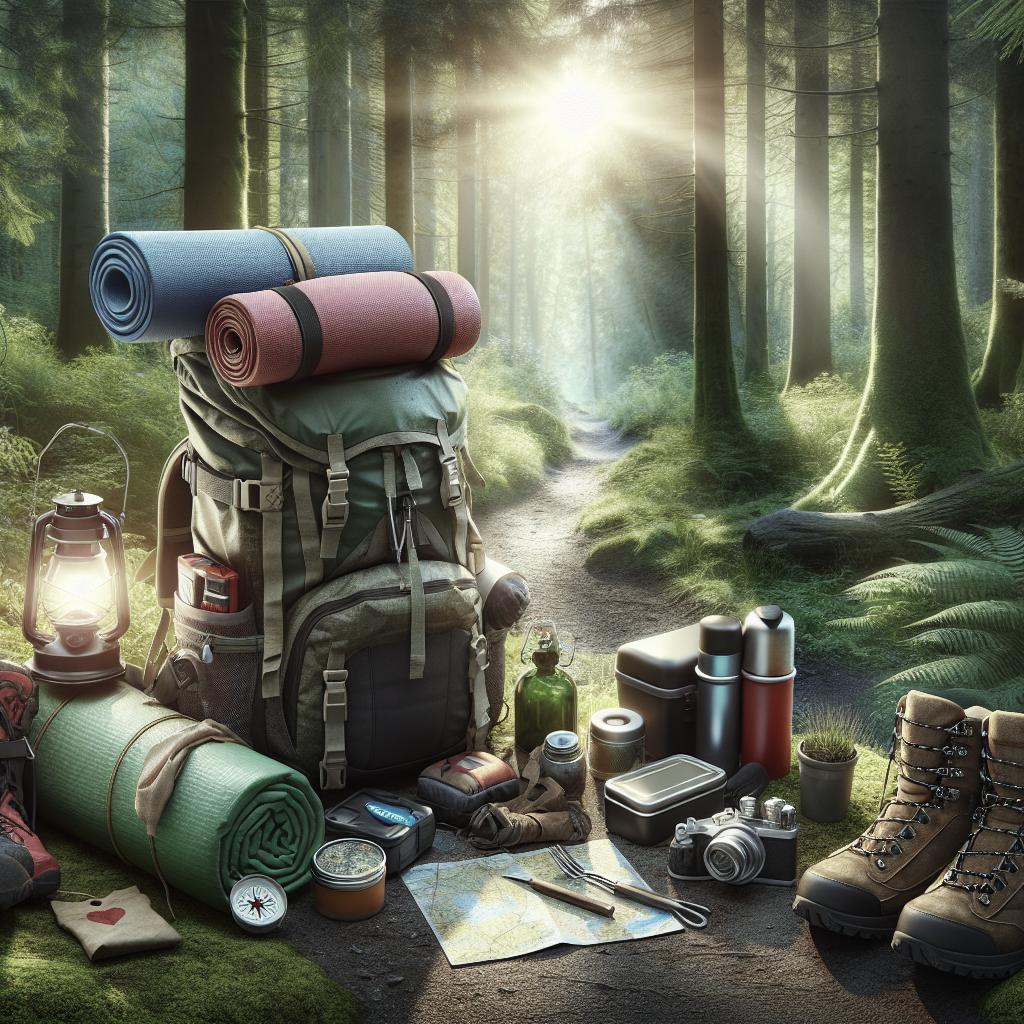“`html
Essentials for Backpacking Trips
Backpacking trips offer an incredible blend of adventure, exploration, and freedom. Still, to ensure you have a smooth and enjoyable trip, packing the right gear is critical. This guide will walk you through the essential items needed for a successful backpacking adventure, covering everything from gear and clothing to toiletries and safety items. You’ll discover the must-haves for cooking in the wilderness, tips on selecting the right backpacking clothes, and even a few luxury items to make your experience more comfortable. Whether you’re a seasoned backpacker or a beginner ready to explore, this guide is crafted to help you pack efficiently and travel safely.
Backpacking Gear Essentials
Your backpacking gear forms the foundation of your trip’s success. Essentially, you need a reliable backpack, a navigational tool like a map or GPS, and a multi-tool or knife. The backpack should be lightweight, durable, and large enough to hold all your essentials. Choose one with multiple compartments and adjustable straps for comfort and adaptability throughout your hike.
Orientation tools like a compass or GPS are vital to keep you on track, especially when venturing into unfamiliar terrains. Additionally, a multi-tool or knife can serve various purposes, from preparing food to repairing gear or emergencies. Selecting high-quality, versatile gear can save both space and weight in your pack.
Cooking Gear
Backpacking Kitchen
Outdoor cooking demands portability and efficiency. A lightweight camping stove and a set of nesting cooking pots can streamline your kitchen setup. Opt for a stove compatible with the fuel types available at your destination. Nesting pots help save space and generally are easy to clean, making them ideal for backpacking.
Don’t forget utensils – a spork or a lightweight set of cutlery works wonders. You can also bring a collapsible bowl or plate to make meal prep and eating more efficient. Packing freeze-dried meals or non-perishable food items can be a great way to conserve space while still enjoying hot meals on the trail.
More Big Gear Items
Aside from cooking gear, a sleeping system like a lightweight tent, sleeping bag, and sleeping pad is crucial. Depending on the climate and seasons of your destination, select a tent that offers adequate protection against weather conditions. A sleeping bag should match the temperature range of your adventure site, and a sleeping pad can enhance comfort and insulation.
Hiking poles can greatly assist in maintaining balance and reducing strain on your joints during long hikes. Lastly, a water filtration system or purification tablets are mandatory for ensuring you have safe drinking water at all times.
Safety Gear
Safety is non-negotiable when backpacking. Carry a first aid kit stocked with necessary supplies like bandages, antiseptics, and pain relief medications. Customize it with any personal medication or allergy-specific items you might require on your trip.
A travel alarm or whistle can be crucial for emergency signaling. Add a high-quality headlamp to your list to ensure you have ample lighting for night-time navigation or emergencies. Keep an eye on the weather, environmental alerts, and forest conditions to keep yourself informed and prepared for any unforeseen challenges.
Toiletries
Maintaining hygiene is important even in the wilderness. Basic toiletries like biodegradable soap, toothbrush, toothpaste, and a small microfiber towel are essential. Consider travel-sized bottles to minimize weight and bulk in your pack.
For extra care, bring along sunscreen and a good insect repellent. Lip balm with SPF protection, hand sanitizer, and a small mirror can also be surprisingly helpful. Remember that personal hygiene and leave-no-trace ethics go hand in hand, helping preserve the environment for future adventurers.
Clothing
Backpacking Clothes
A layered clothing system is vital for packing efficiency and comfort in varying weather conditions. Start with moisture-wicking base layers, followed by insulating mid-layers, and finish with a waterproof and windproof outer layer. This system helps regulate body temperature effectively.
Your clothing choices should focus on versatility and adaptability. Consider packing a wide-brimmed hat for sun protection and a beanie for colder evenings. With the right layers, you’ll be able to adapt easily to whichever climate you encounter.
Avoid Cotton
Avoiding cotton clothing on the trail is sound advice for any backpacker. Cotton retains moisture, leaves you feeling clammy and cold, and takes ages to dry. Instead, choose synthetics or merino wool as they wick moisture and dry quickly, providing better insulation.
It’s particularly important for your base layers, socks, and undergarments to be crafted from quick-drying, moisture-wicking materials. The right fabric can make a huge difference in maintaining comfort and avoiding issues like hypothermia or blisters on long hikes.
Backpacking Luxury Items
While efficiency and functionality reign supreme, adding a couple of luxury items can enhance your trip. Consider packing a lightweight hammock or a compact camp chair for comfort during breaks. An e-reader or deck of cards can provide entertainment during leisure hours at the campsite.
A quality camera or a smartphone with a good camera can be an excellent addition, allowing you to capture breathtaking views and memories. Choose items that offer maximum joy with minimal impact on pack weight to maintain a balance between comfort and practicality.
More Backpacking Tips
Planning is the backbone of a successful backpacking adventure. Assess your itinerary and destination to select the right gear and clothing, allowing flexibility for unpredictable conditions. Don’t overpack; every item should serve a meaningful purpose.
Invest time in learning about the trail and its terrain, and practice packing to optimize space and weight distribution. Building physical endurance will also help, reducing the strain during the trip. Remember, a well-prepared trip is a safer and more enjoyable one.
Save this post!
Bookmark this page for future reference or share with friends to help them embark on their own backpacking adventures. Proper preparation can turn a good trip into a great one, and this guide is designed to simplify that process. Happy trails!
| Category | Essential Items |
|---|---|
| Backpacking Gear | Backpack, Navigational Tools, Multi-tool |
| Cooking Gear | Camping Stove, Nesting Pots, Utensils |
| More Big Gear Items | Tent, Sleeping Bag, Hiking Poles |
| Safety Gear | First Aid Kit, Whistle, Headlamp |
| Toiletries | Biodegradable Soap, Sunscreen, Insect Repellent |
| Clothing | Layered System, Waterproof Jacket, Non-Cotton Fabrics |
| Backpacking Luxury Items | Hammock, Camera, E-Reader |
| Tips | Plan, Assess, Practice |
“`

